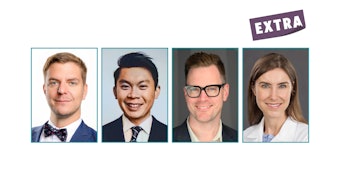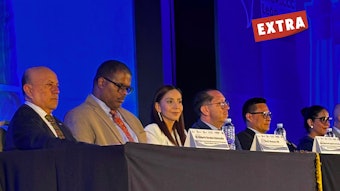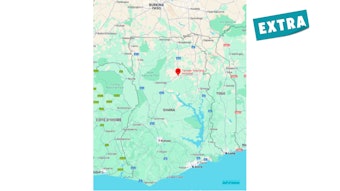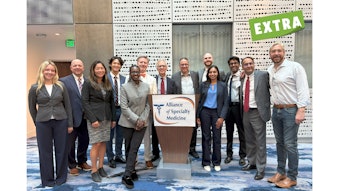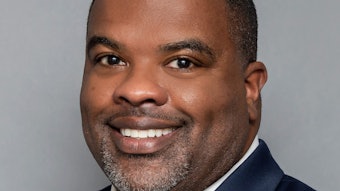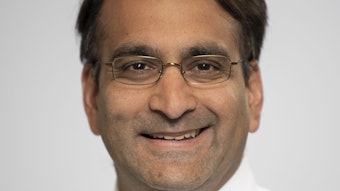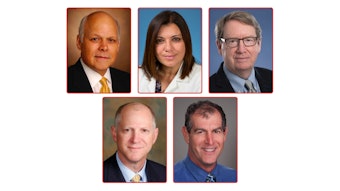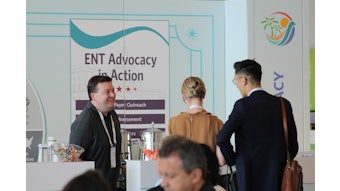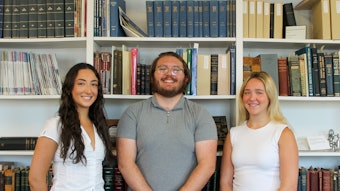Global Is Local: Improving Care for Underserved Patients in Our Communities
Learn how pioneering Academy members are innovating community-based healthcare solutions—from mobile cancer screening in Atlanta, Georgia, to telehealth programs in rural Appalachia.
Josephine A. Czechowicz, MD
 Josephine A. Czechowicz, MD
Josephine A. Czechowicz, MD
Meeting Patients Where They Are
Academy member Charles E. Moore, MD, has earned the nickname “the doc in the green station wagon” based on his practice of traversing the streets of Atlanta’s poorest neighborhoods in his Subaru to screen for head and neck cancer. Since residency, Dr. Moore has felt that the best way to reach those in need is to meet people where they are: in homeless shelters, churches, and bus stops, often from the back of his car.
Dr. Moore’s commitment to the underserved led him to found the organization HEAL (Health Education, Assessment, and Leadership) in 2004, which evolved from mobile outreach into the HEALing Community Center—a federally qualified health center in southwest Atlanta serving over 6,000 individuals annually across four sites. Additionally, as chief of otolaryngology–head and neck surgery at Grady Hospital in Atlanta, Dr. Moore has led innovative violence prevention efforts for trauma patients, resulting in a dramatic reduction in reinjury and early death from homicide. Less than 3% of participants in the program experience reinjury, compared to national rates of approximately 20%–40%.
Learning from Global Public Health Endeavors
I began my pediatric otolaryngology career researching hearing loss with partners in Peru, where I saw how limited healthcare access and social barriers impacted children's health. As faculty at the University of California, San Francisco (UCSF), my research has focused on otolaryngology-head and neck conditions in refugee populations, highlighting how displacement, language barriers, and access to care affect diagnosis and treatment. Additionally, I have investigated how social factors, such as insurance status, income level, and proximity to specialty care, correlate with delayed treatment in patients with vascular anomalies. As I have found, many tools developed in the global health space are highly applicable to caring for underserved patients in our communities. The community-based, context-sensitive research approach I learned from my Peruvian partners now informs my work with underserved populations in California.
Addressing Rural Healthcare Gaps
Not all underserved people in the United States live in urban places. Matthew L. Bush, MD, PhD, MBA, incoming AAO-HNS Coordinator for Research and Quality, has pioneered outreach in rural Kentucky. A native of the Appalachian region, he has championed hearing screening, telehealth, and community-based patient navigation to combat delays in pediatric and adult hearing care across rural Kentucky. Dr. Bush, who is chair of otolaryngology-head and neck surgery at the University of Kentucky, also leads NIH-supported community trials, such as a novel lay-patient navigator program, targeting hearing screening and diagnostic testing across the life span.
Bridging Research and Health Equity
As director of the UCSF Children’s Communication Center, Dylan K. Chan, MD, PhD, leads NIH- and Patient-Centered Outcomes Research Institute (PCORI)-funded translational research that bridges basic science and health equity. His laboratory explores the molecular underpinnings of acquired and genetic hearing loss, focusing on calcium signaling and cell death pathways to develop targeted therapies. Equally central to his mission is understanding and addressing disparities in hearing health and language development—investigating why some children experience worse outcomes, how their families navigate hearing healthcare systems, and how improved access to screening and telehealth can help close these gaps. By integrating a public health and systems-based perspective into the study of hearing loss, Dr. Chan advances both scientific knowledge and equitable care for all children.
Proven Approaches for Community-Based Outreach
While otolaryngologists may serve different populations, the same methods can be used to improve care for underserved patients across locales. Here are some common approaches used by successful community-based healthcare programs.
1. Identify Local Health Disparities via Mapping
- Use patient data to pinpoint zip codes or census tracts in your area with late-stage disease or delayed care.
- Collaborate with public health departments to access regional health maps.
2. Engage Community Stakeholders
- Connect with local nonprofits, churches, schools, shelters, or patient advocacy groups.
- Organize health-related events (i.e., screenings) where people already gather.
3. Mobilize Task‑Sharing
- Train residents, nurses, audiologists, patients, family members, and medical students to help with outreach and follow‑up.
- Consider patient navigators—patients, family members, community workers—for education and coordination.
4. Build Telehealth Infrastructure
- Acquire basic tele-audiology kits: otoscopes, audiometry hardware, and secure voucher-based consultation systems.
- Pilot teletherapies and remote screenings.
5. Adopt Community-Based Participatory Research Principles
- Engage patients and families in identifying barriers and co-developing interventions.
- Tailor solutions culturally and linguistically to your target population.
6. Partner with Academic and Non-Profit Entities
- Build cross-sector collaborations: universities, federally qualified health centers, local governments, and philanthropic bodies.
- Apply for grants targeting rural, urban underserved, or minoritized populations.
7. Measure Impact with Research Rigor
- Collect baseline and post-intervention metrics: stage at diagnosis, time to care, hearing milestones, appointment adherence.
- Publish and share to inform broader adoption.
8. Take the First Step
- Begin small: one pop-up screening day, one telehealth pilot, one navigator role.
- Scale iteratively based on outcomes and community feedback.
Community health methodology has a role in caring for underserved populations everywhere. By leveraging evidence-based mapping, community engagement, scalable task-sharing, telehealth, and patient-centered research, otolaryngologists can extend specialized care to patients who are too often overlooked.
“No action is too small,” says Dr. Moore. “Whether your focus is at the local, national, or international level, you can make a tangible difference.”
